How Mindful Swimming Can Unlock Your Potential
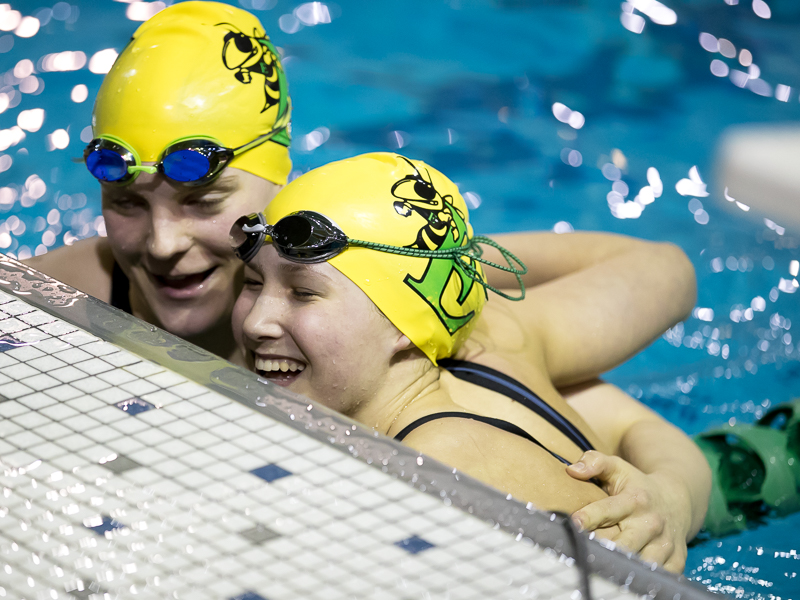
By Abigail Sheridan, Swimming World Intern.
All athletes know that they’re supposed to think positively in order to do their best, but the day-to-day challenges can wear down their drive. As mindfulness training has become a hot topic in performance psychology, athletes can use mindful swimming techniques as a tool to unlock their potential.
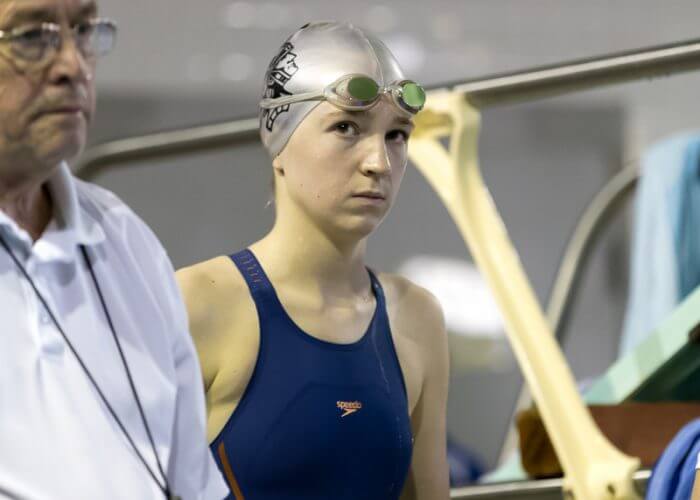
Photo Courtesy: Colin Sheridan
Physiological Response to Stressful Emotions
Coaches often say that negative emotions are destructive to performance; however, if negative emotions (such as unhappiness, anger, contempt, disgust, guilt, fear, and nervousness) are natural, then what’s wrong with them in the context of swimming? It all depends on how the athletes focus their emotional energy.
The “fight or flight” response is the human body’s natural reaction to a real or perceived harmful event, attack or threat to survival. The flow of sympathetic hormones increases heart rate, blood pressure and breathing rate. While swimming a hard set and life-threatening situations are not the same, the experienced emotions and physiology of both can be quite similar.
Swimmers can use this heightened state of arousal to their advantage, as adrenaline from the sympathetic nervous system can increase speed and power. Blood shunts to the working muscles to aid in nutrient delivery and waste removal, which is crucial to elite performance.
Researchers claim that these negative emotions can focus thoughts and reduce distractions in order to elicit an appropriate response to the current situation. These emotions of fear, stress and anger are key in the “fight or flight” response, so it it is logical that the brain ignores other stimuli in order to best respond to the present situation.
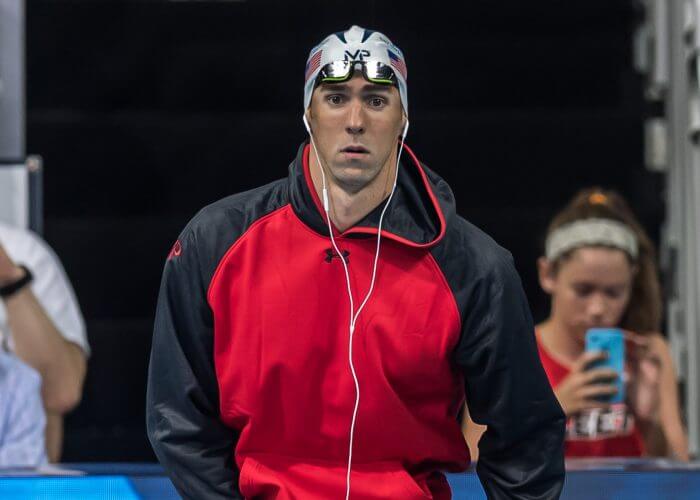
Photo Courtesy: Peter H. Bick
Yet coaches have differing opinions of whether this response is beneficial or harmful to performance. In the Coaches Guide to Sport Psychology, Rainer Martens says, “When athletes enter a state of fight or flight, their athletic skills and abilities may derail, creating additional frustration around sport participation.” Martens found that in extreme cases, it caused the athlete to give up the sport completely.
For example, thinking about how long or difficult a set is would prevent the realization that it is not as hard as it seems, or that you could be working harder or swimming faster. Michael Phelps, the most decorated Olympian of all time, said, “If you say ‘can’t,’ you’re restricting what you can do or ever will do.”
This is also applicable to thoughts during practice. Thinking negatively in practice, such as this set is too hard, too long, or it can’t be done, prevents the accumulation of feelings of success in the set. Levels of motivation decrease, and your chances of working as hard as you’re capable of are slim to none.
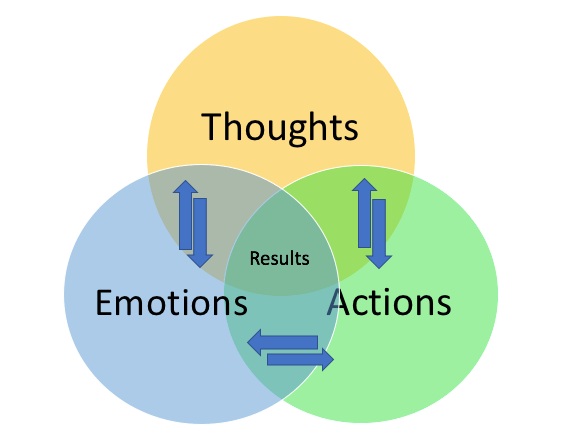
Photo Courtesy: Kristen Kinzer
Elizabeth Gilbert, an American author, said, “Your emotions are the slaves to your thoughts, and you are the slave to your emotions.” Her words embody the never-ending feedback loop that your thoughts can control your emotions, and your emotions can control what you do.
In this case, harnessing your emotional response is one of the most important things you can do while practicing or racing. Being mindful of your thoughts – stepping back to be aware of these thoughts without judgment – during a set and a race is the first step to choose more beneficial thought-pathways.
For example, you can choose to think wow, this set is taking me one step closer to my goals, rather than ugh, when will this be over? We always have the choice to refocus and retrain our thinking.
The Chemistry of Positive Thoughts
Thinking positive thoughts releases endorphins and serotonin, both of which give a generalized feeling of well-being. These chemicals in the brain interact with the opiate receptors in the brain to reduce the perception of pain, while boosting feelings of pleasure and belonging, thereby giving swimmers the extra mental boost to perform.
Practicing in a happier mood is shown to increase motivation, which in turn allows hard work. Along with dedication and talent, this hard work is what enables success.
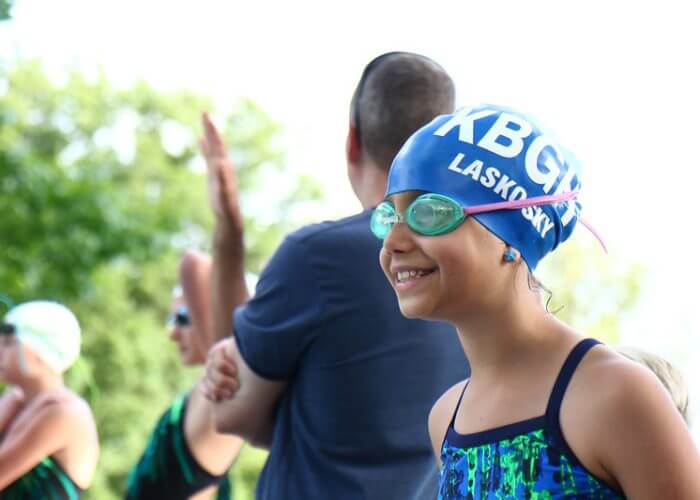
Photo Courtesy: Colin Sheridan
According to Wade Boggs, an American baseball player who was inducted into the Hall of Fame in 2005, “A positive attitude creates a chain of positive thoughts, events, and outcomes. It is a catalyst and it sparks extraordinary results.” The creation of a positive mentality is what starts this extraordinary chain.
Applying Mindfulness & Positivity to Swimming
When applied to swimming, mindfulness translates to drawing awareness to a certain aspect of your training. Surrendering your mind to what you’re thinking and feeling in the moment – while making the smallest adjustments that align with your goals – can make a huge difference in your attitude at practice. The effort to remain positive and in the zone, even during the hardest of sets, will transform your swimming in the long-term.
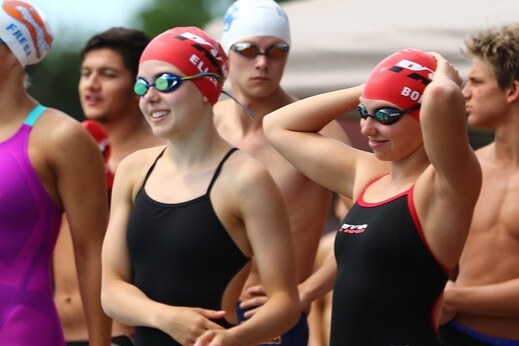
Photo Courtesy: Colin Sheridan
Mindful swimming can be as simple as directing your energy and thought into your pinkie position during your catch, noticing how it feels to “get it right” with feedback from your coach. Robert Robitaille, the head coach of Parkland High School Swimming and Diving, tells his athletes to pick little things to achieve throughout the set in order to maintain a positive attitude. This is instrumental in coping with the struggles of practice each day.
Maybe it’s taking three dolphin kicks off each wall – something you can achieve every 15 seconds – or maybe you focus on not breathing off each wall – something that requires determination through the whole set. It’s up to the swimmer, but either way, mindful swimming makes keeping a positive attitude throughout practice much easier.
A positive, mindful attitude will enhance your performance during a set or a meet not only because of your body’s natural physiological response, but also because you have confidence in the work you’ve done. Mindful practicing allows you to turn off your self-defeating thoughts during high-pressure situations and channel your energy into perfect execution.
Work with your coach and teammates to cultivate a spirit of mindful swimming instead of mindless laps along the black line!
All commentaries are the opinion of the author and do not necessarily reflect the views of Swimming World Magazine nor its staff.




Nicely written article, Abi. All great ideas to put into practice, both in and out of the pool!
Look at Peyton!!!!

 Elissa Bellairs Rautzhan
Elissa Bellairs Rautzhan
Fun stuff, right! Good article by Abi too!!!!